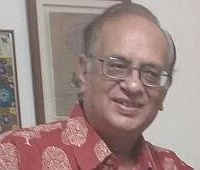
Subhash Mathur is a resident of Jaipur after superannuation from Indian Revenue Service in 2007. Presently, Subhash is engaged in social and charitable work in rural areas. Subhash is also Editor of http://www.inourdays.org/, an online portal for preserving work related memories.
My wife and I were visiting our son Gaurav and his family at Ahmedabad in 2012 for a few weeks. One fine Sunday morning, out of the blue, I announced that I needed a haircut.
Before anyone else could react, our DIL (daughter-in-law) Poonam took control of the situation. She immediately suggested "Papa, why don't you soak in some new experience?"
Reflexively I shot back: "Like what?"
"There's a new hair spa in town. L'Oréal. Why don't you give it a go? The ambience is amazing."
"Have you been there?" I asked
"Not personally but a few of my friends have spoken glowingly.
It's swanky. It's shiny. Fancy gizmos. New hair wash sys. Lovingly perfumed. The works!"
I went into a reverie.
When I was growing up in the 1960s, the family barber Sohan Lal would visit our home at B-87 Ganesh Marg once a month on a Sunday morning, generally in the middle of the month.
Before breakfast time.
We were eight male members to be tackled. Daddy, Chachaji, and six brothers. And the fiat of the household was that everyone had to submit to this discipline.